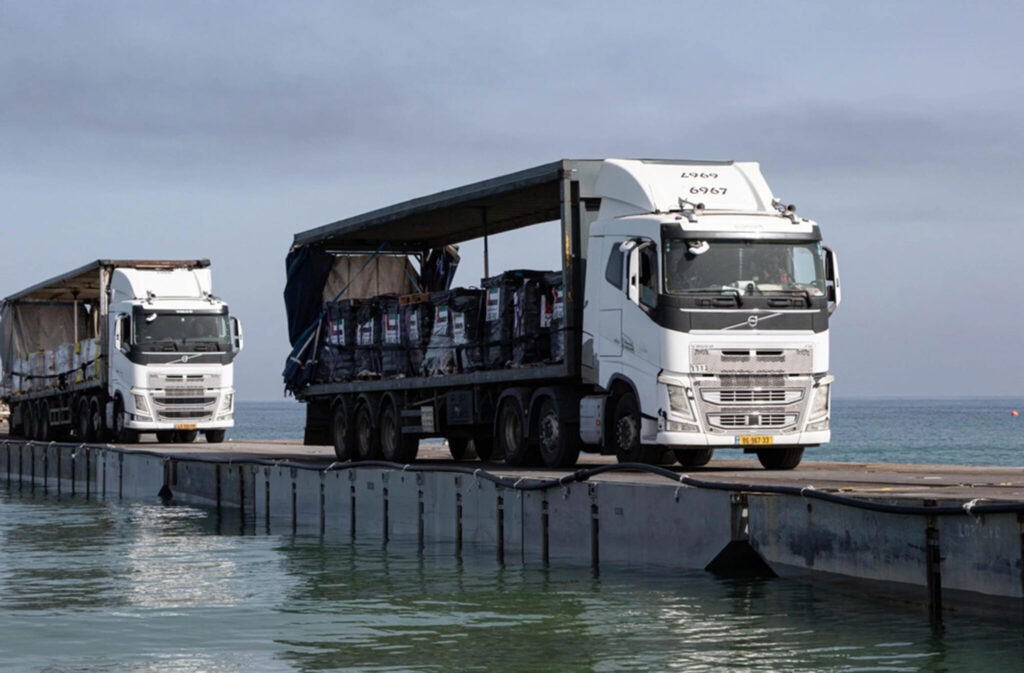Trucks carrying badly needed aid for the Gaza Strip rolled across a newly built U.S. pier and into the besieged enclave for the first time Friday as Israeli restrictions on border crossings and heavy fighting hindered the delivery of food and other supplies.
Quick Read
- New US Pier for Gaza Aid Operational: Trucks carrying vital aid for Gaza have begun using a newly constructed U.S. floating pier, aiming to deliver up to 150 truckloads a day amid ongoing Israeli operations in Rafah.
- Challenges Despite New Aid Route: Despite the new pier, challenges persist with Israeli restrictions and heavy fighting limiting the overall effectiveness. Aid organizations and the U.S. caution that the pier is not a complete substitute for land-based deliveries.
- Security and Operational Concerns: The operation faces potential risks from militant attacks and logistical hurdles, alongside a critical fuel shortage, complicating aid distribution efforts.
- Humanitarian Crisis Intensifies: The U.N. and other aid agencies stress that the new maritime route, while helpful, cannot replace the necessary scale of aid delivered via land routes, particularly with the main crossings facing disruptions from fighting and protests.
- Coordination and Distribution of Aid: Aid delivered via the pier is managed by the U.N., with coordination involving the registration and dispatch of trucks to distribute the supplies across Gaza, emphasizing the need for more open land routes, including the Rafah crossing.
The Associated Press has the story:
Trucks are rolling across a new US pier into Gaza. But challenges remain to getting enough aid in
Newslooks- WASHINGTON (AP) —
Trucks carrying badly needed aid for the Gaza Strip rolled across a newly built U.S. pier and into the besieged enclave for the first time Friday as Israeli restrictions on border crossings and heavy fighting hindered the delivery of food and other supplies.
The shipment is the first in an operation that American military officials anticipate could scale up to 150 truckloads a day, all while Israel presses in on the southern city of Rafah in its seven-month offensive against Hamas. At the White House, National Security Council spokesman John Kirby said “more than 300 pallets” of aid were in the initial delivery and handed over to the U.N., which was preparing it for distribution.
Kirby said the U.S. has gotten indications that “some of that aid was already moving into Gaza.”

But the U.S., U.N. and aid groups warn that the floating pier project is not a substitute for land deliveries that could bring in all the food, water and fuel needed in Gaza. Before the war, more than 500 truckloads entered the Palestinian territory on an average day.
The operation’s success also remains tenuous because of the risk of militant attack, logistical hurdles and a growing shortage of fuel for the aid trucks due to the Israeli blockade of Gaza since Hamas’ Oct. 7 attack. Militants killed 1,200 people and took 250 others hostage in that assault on southern Israel. The Israeli offensive since has killed more than 35,000 Palestinians in Gaza, local health officials say, while hundreds more have been killed in the West Bank.
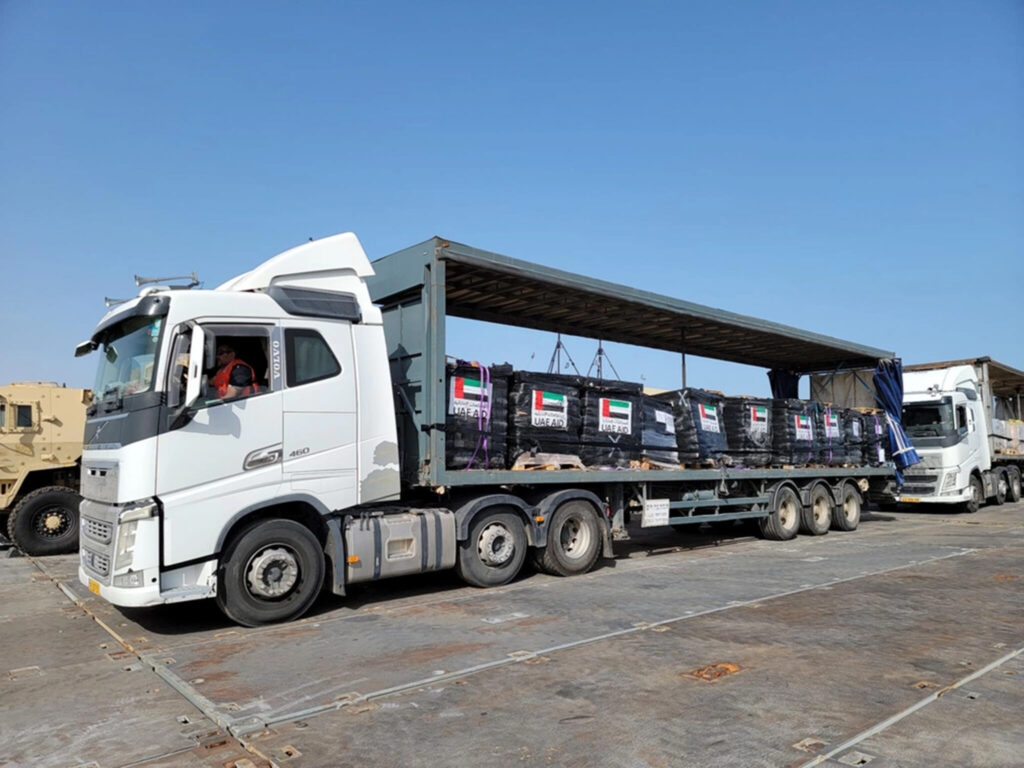
Aid agencies say they are running out of food in southern Gaza, while the U.N. World Food Program says famine has already taken hold in Gaza’s north.
Troops finished installing the floating pier on Thursday, and the U.S. military’s Central Command said the first aid crossed into Gaza at 9 a.m. Friday. It said no American troops went ashore in the operation.
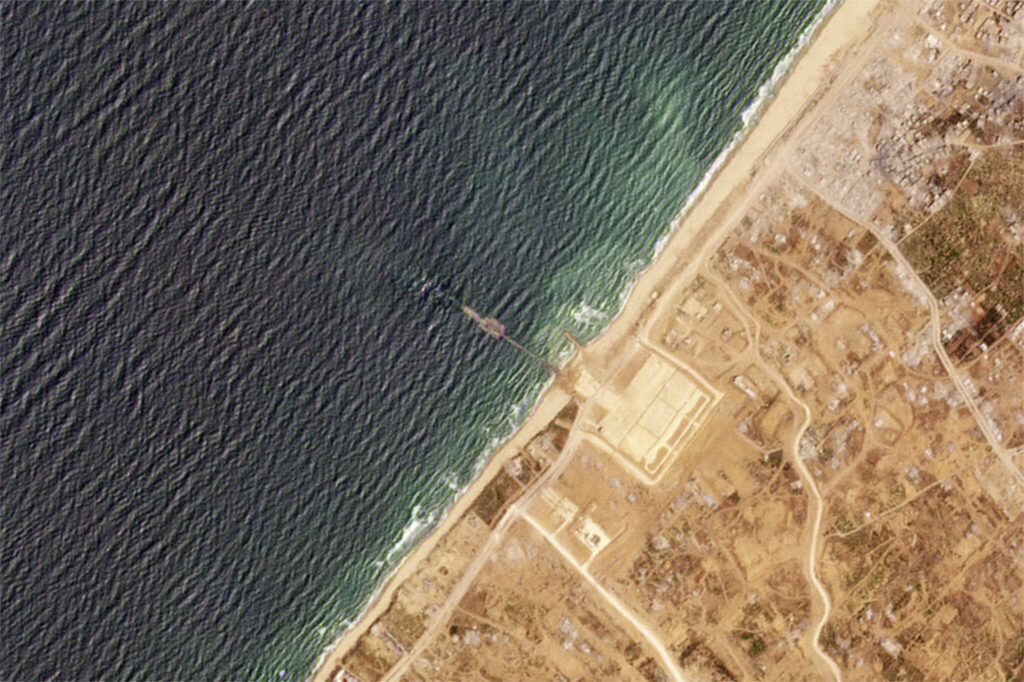
The Pentagon said no backups were expected in the distribution process. The U.S. plan is for the United Nations, through the World Food Program, to take charge of the aid once it leaves the pier. This will involve coordinating the arrival of empty trucks and their registration, overseeing the transfer of goods coming through the floating dock to the trucks and their dispatch to warehouses across Gaza, and, finally, handing over the supplies to aid groups for delivery.
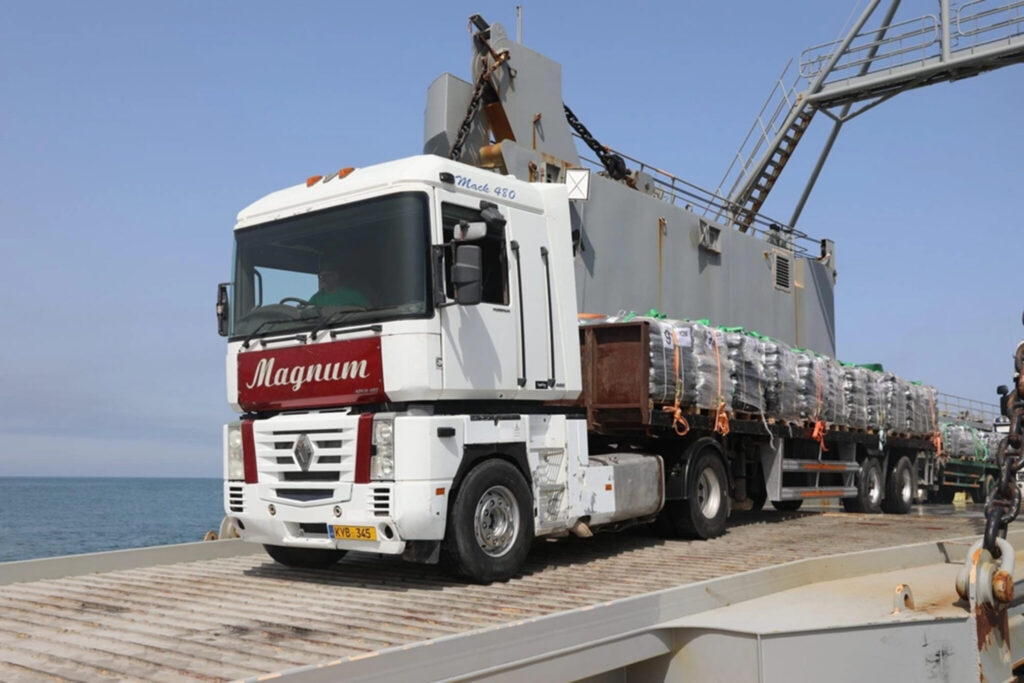
The WFP said Friday evening that aid had that come through the pier had been transported to its warehouses in Deir al-Balah and was ready for collection and distribution.
The U.K. said some of its aid for Gaza was in the first shipment that went ashore, including the first of 8,400 kits to provide temporary shelter made of plastic sheeting. And it said more aid, including 2,000 additional shelter kits, 900 tents, five forklift trucks and 9,200 hygiene kits, will follow in the coming weeks.
“This is the culmination of a Herculean joint international effort,” said Prime Minister Rishi Sunak. “We know the maritime route is not the only answer. We need to see more land routes open, including via the Rafah crossing, to ensure much more aid gets safely to civilians in desperate need of help.”

The U.N. humanitarian aid coordinating agency said the start of the operation was welcome but not a replacement for deliveries by land.
“I think everyone in the operation has said it: Any and all aid into Gaza is welcome by any route,” Jens Laerke, spokesman of the Office for the Coordination of Humanitarian Affairs, told journalists in Geneva on Friday. Getting aid to people in Gaza “cannot and should not depend on a floating dock far from where needs are most acute.”
Anastasia Moran, an associate director of the International Rescue Committee, argues that the pier is in fact diverting attention from the surging humanitarian crisis.
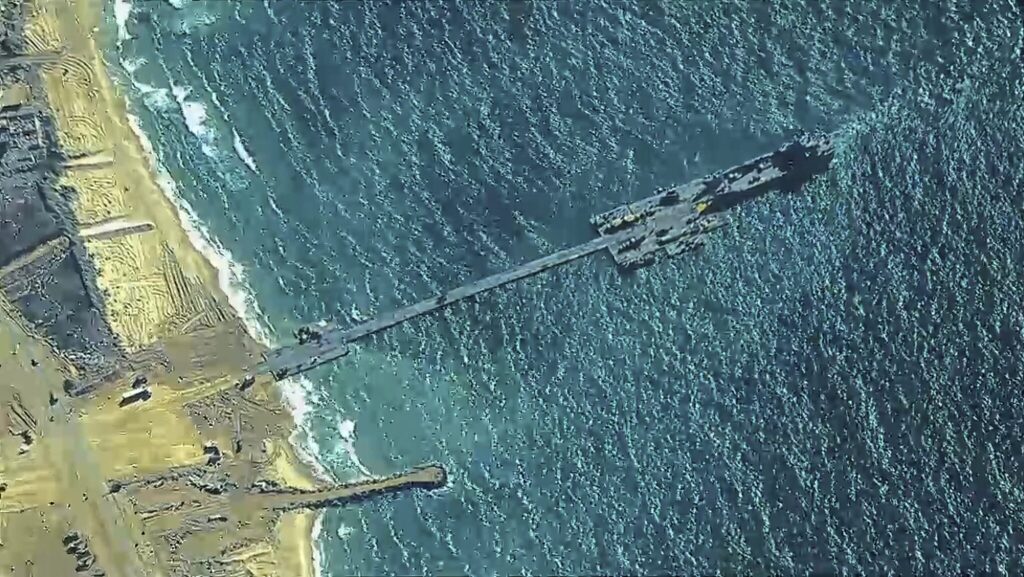
Over the past couple of months, “the maritime route has been taking time and energy and resources at a time when aid has not been scaled up,” she said. “And now that the maritime route is up and running, the land crossings have been effectively shut down.”
During the nine-day period between May 6, when Israel began the Rafah offensive, and May 15, a total of 154 trucks carrying food and 156 carrying flour have entered Gaza through three land crossings, U.N. deputy spokesperson Farhan Haq said Friday. Haq also warned this week that almost no fuel is getting through.
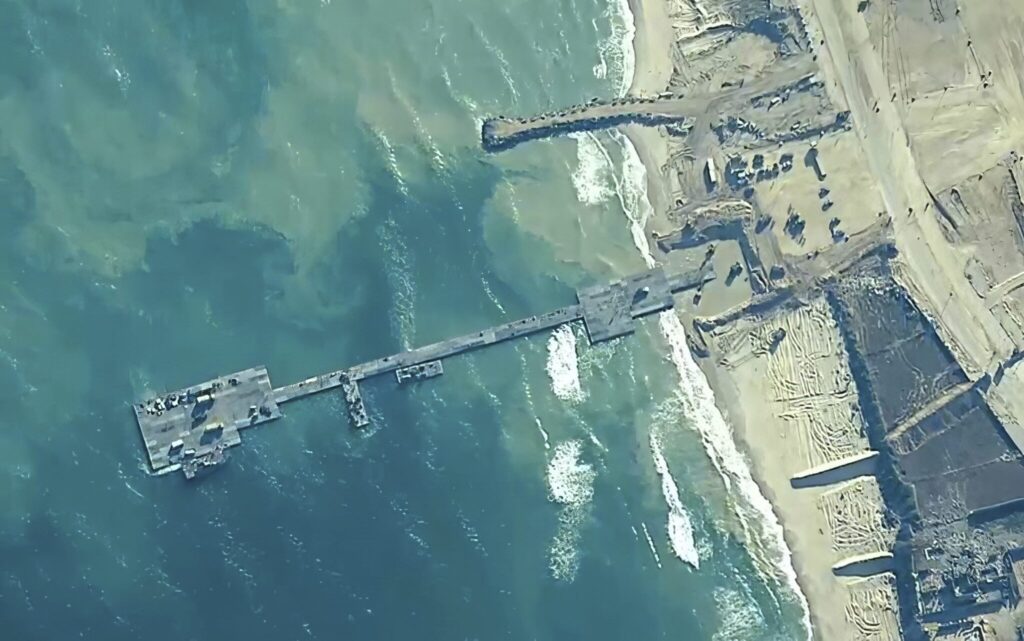
Israel fears Hamas will use fuel in the war, but it asserts it places no limits on the entry of humanitarian aid and blames the U.N. for delays in distributing goods entering Gaza. Under pressure from the U.S., Israel has opened a pair of crossings to deliver aid into the territory’s hard-hit north in recent weeks.
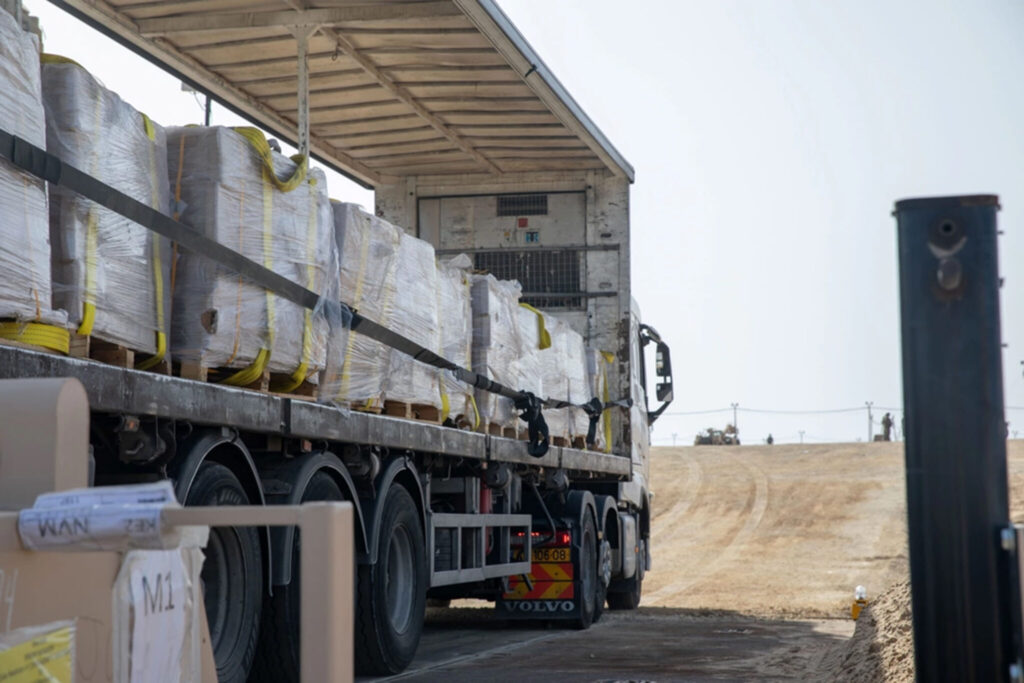
It has said that a series of Hamas attacks on the main crossing, Kerem Shalom, have disrupted the flow of goods. The U.N. says fighting, Israeli fire and chaotic security conditions have hindered delivery. There have also been violent protests by Israelis that disrupted aid shipments.
Israel recently seized the Rafah border crossing in its push against Hamas around that city on the Egyptian border, raising fears about civilians’ safety while also cutting off the main entry for aid into the Gaza Strip.
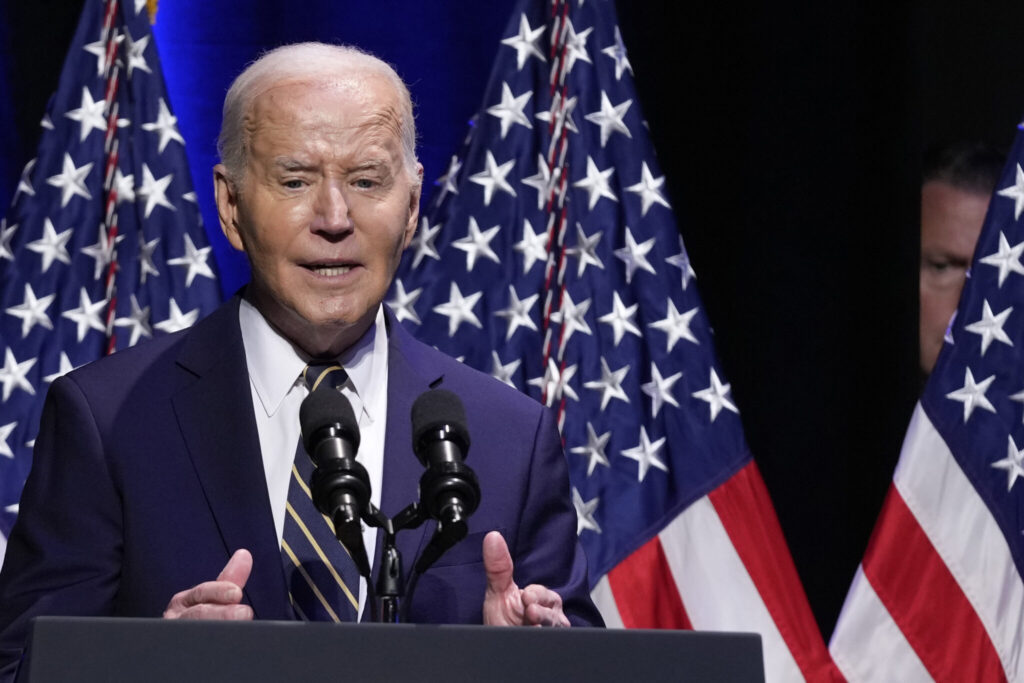
U.S. President Joe Biden ordered the pier project, expected to cost $320 million. The boatloads of aid will be deposited at a port facility built by the Israelis just southwest of Gaza City. The U.S. has closely coordinated with Israel on how to protect the ships and personnel working on the beach.
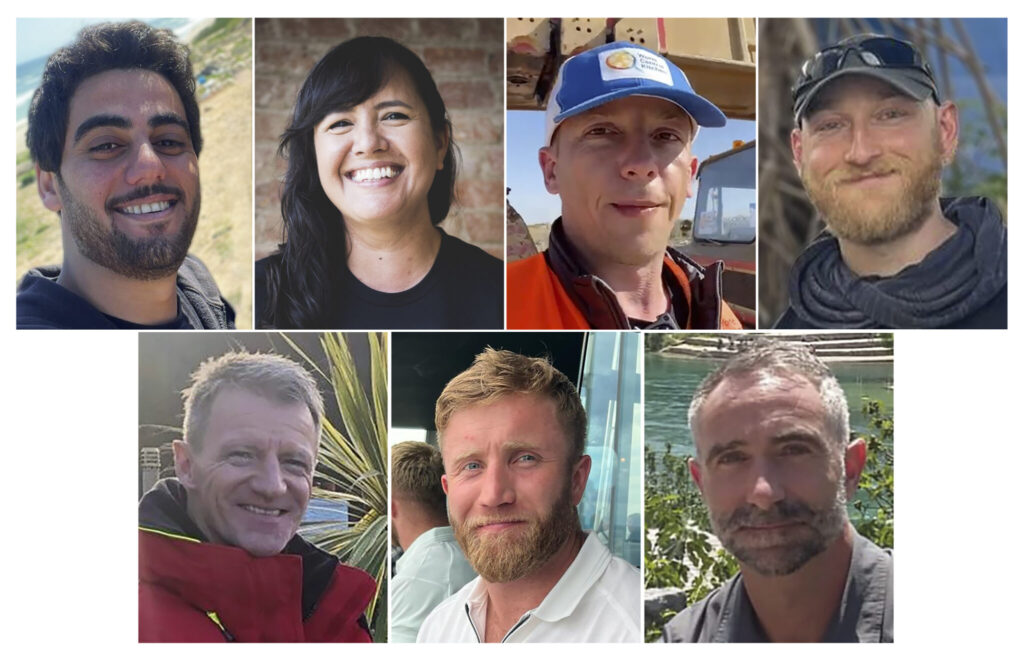
Concern about the safety of aid workers was highlighted last month when an Israeli strike killed seven relief workers from World Central Kitchen whose trip had been coordinated with Israeli officials. The group had also brought aid in by sea.
Pentagon officials have made it clear that security conditions will be monitored closely and could prompt a shutdown of the maritime route, even if just temporarily. Already, the site has been targeted by mortar fire during its construction, and Hamas has threatened to target any foreign forces who “occupy” the Gaza Strip.
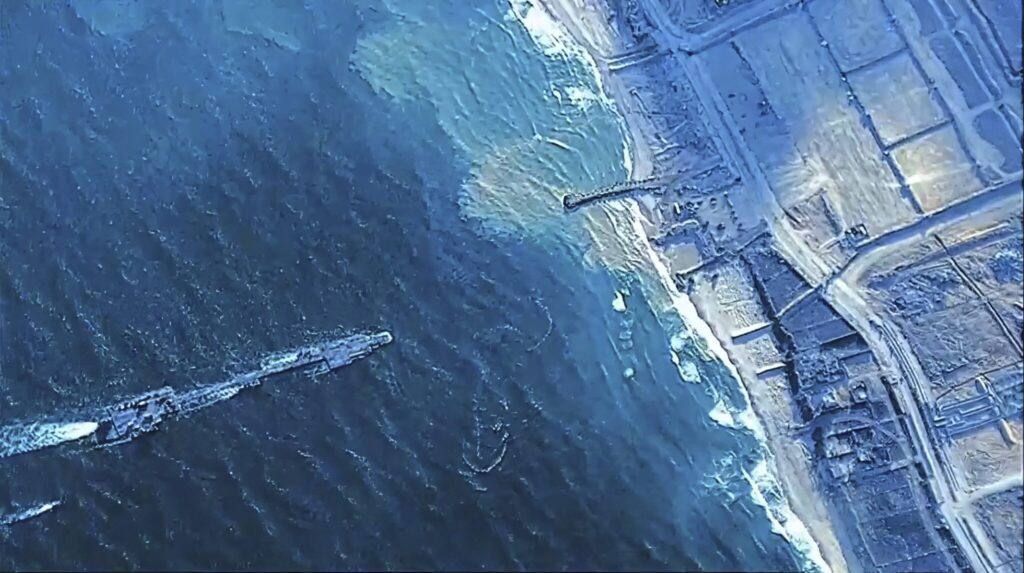
Israeli forces are in charge of security on shore, but there are also two U.S. Navy warships nearby that can protect U.S. troops and others.
The aid for the sea route is collected and inspected in Cyprus, then loaded onto ships and taken about 200 miles (320 kilometers) to the large floating pier off the Gaza coast. There, the pallets are transferred onto the trucks that then drive onto the Army boats, which will shuttle the trucks from the pier to a floating causeway anchored to the beach. Once the trucks drop off the aid, they return to the boats.

